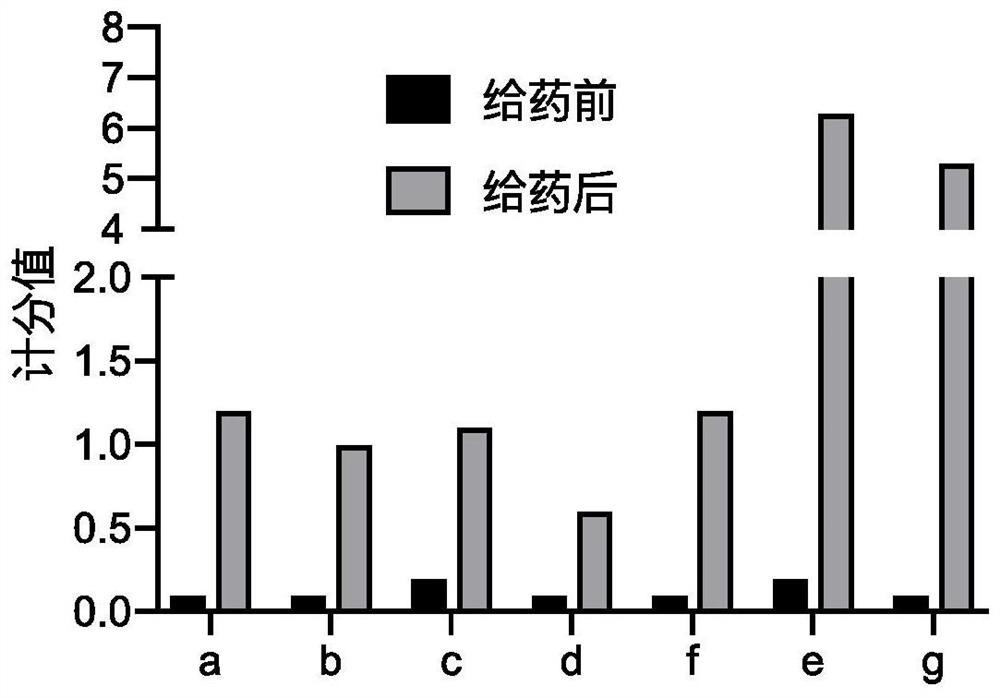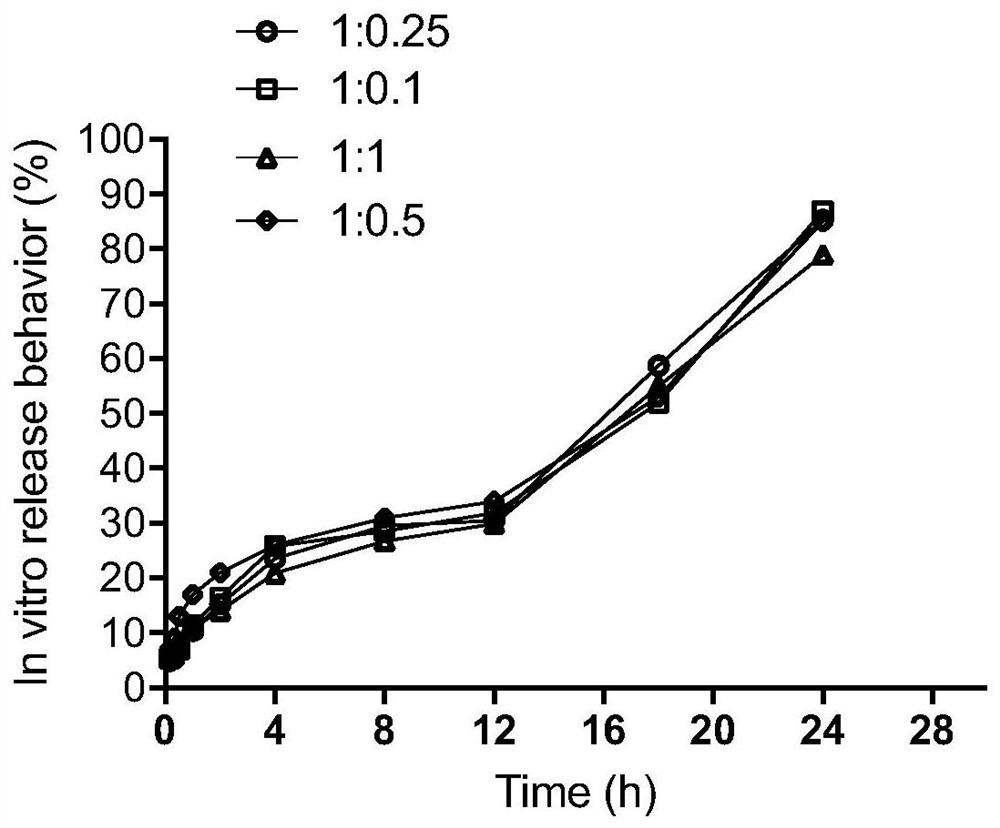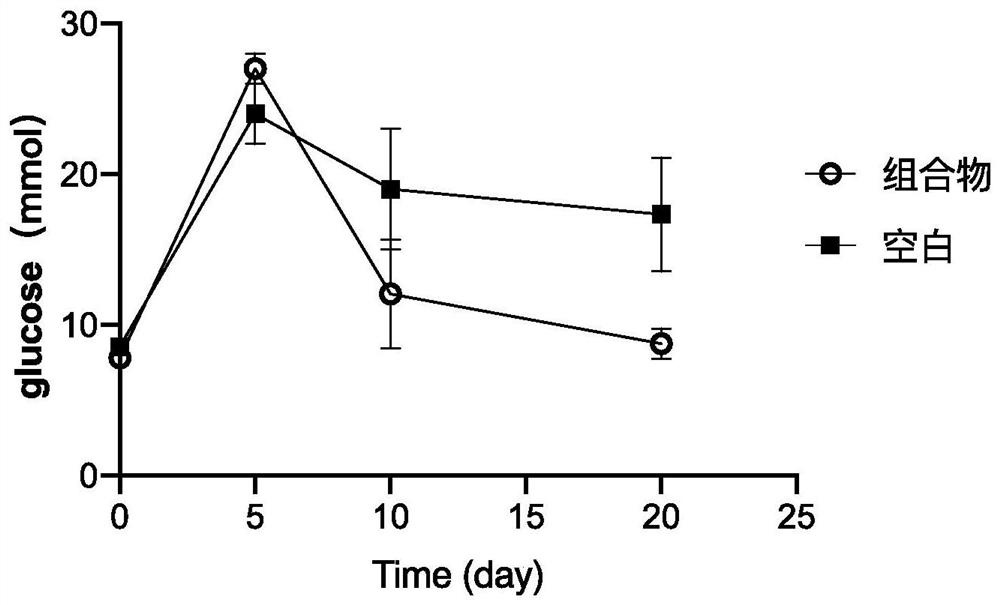Composition of micro-array drug delivery system of glucagon-like peptide-1 receptor stimulating agent
A technology of glucagon and receptor agonist, applied in the field of microarray drug delivery system, can solve the problem of inability to deliver GLP-1 receptor agonist, and achieve the effect of process stability
- Summary
- Abstract
- Description
- Claims
- Application Information
AI Technical Summary
Problems solved by technology
Method used
Image
Examples
Embodiment 1
[0028] Example 1: Safety and irritation evaluation of microarray membrane
[0029] Using thermoplastic polyurethane, ethylene-vinyl acetate copolymer, polyvinylpyrrolidone-vinyl acetate copolymer, polylactic acid glycolic acid, hypromellose acetate succinate, and polyoxyethylene microfabricated arrays to evaluate safety and irritation , silicon wafer, PDMS material as the control group.
[0030] The details are as follows: 80 ICR mice were randomly divided into 8 groups, 10 in each group. The abdomen and back hair were manually shaved to expose the epidermis. Take a thermoplastic polyurethane microarray, b ethylene-vinyl acetate copolymer microarray, c polyvinylpyrrolidone-ethylene acetic acid copolymer microarray, d polylactic acid glycolic acid microarray, e hypromellose acetate succinate microarray , f polyoxyethylene microarray, g silicon chip microarray, h PDMS microarray, press the exposed epidermis for 5 minutes, let the above microarray act on the skin, observe the w...
Embodiment 2
[0037] Embodiment 2: Research on the glass transition temperature and melting point of the composition
[0038] The microarray membranes of 5 different materials provided by the present invention were taken to form compositions with semaglutide, exenatide, liraglutide, and dulaglutide respectively, and the glass transition temperature and melting point of the compositions were studied. Compared with the glass transition temperature and melting point of the existing published microarray membranes, as well as the degradation research of the prepared samples, it is shown that the existing disclosed technology cannot achieve semaglutide, exenatide, liraglutide , Epidermal drug delivery of dulaglutide.
[0039] as shown in the table below
[0040]
[0041] Note: A thermoplastic polyurethane 41D, B ethylene-vinyl acetate copolymer 150, C polyvinylpyrrolidone-ethylene acetate copolymer, D polyoxyethylene, E hypromellose acetate succinate, F glass, G PDMS.
[0042] The results sh...
Embodiment 3
[0043] Example 3: Test proof of mechanical strength and epidermis penetration ability
[0044] Furthermore, the epidermis drug delivery ability of the composition provided by the invention was studied, and compared with the existing microarray technology products.
[0045] The mechanical properties of polyvinylpyrrolidone-ethylene acetic acid copolymer-liraglutide microarray composition and glass-liraglutide microarray composition were analyzed by Agilent Nano Indenter G200. Test the load-displacement curve diagram of a loading-unloading cycle process of synapses of different sizes, and summarize the maximum load of the pressurized section in the curve, the deformation of the synapse and whether it is broken or not, and tabulate it as follows:
[0046]
[0047] Note: A polyvinylpyrrolidone-ethylene acetic acid copolymer-liraglutide microarray composition, B glass-liraglutide microarray composition.
[0048] According to the common knowledge of the prior art, drug delivery ...
PUM
| Property | Measurement | Unit |
|---|---|---|
| thickness | aaaaa | aaaaa |
| diameter | aaaaa | aaaaa |
| height | aaaaa | aaaaa |
Abstract
Description
Claims
Application Information
 Login to View More
Login to View More - R&D
- Intellectual Property
- Life Sciences
- Materials
- Tech Scout
- Unparalleled Data Quality
- Higher Quality Content
- 60% Fewer Hallucinations
Browse by: Latest US Patents, China's latest patents, Technical Efficacy Thesaurus, Application Domain, Technology Topic, Popular Technical Reports.
© 2025 PatSnap. All rights reserved.Legal|Privacy policy|Modern Slavery Act Transparency Statement|Sitemap|About US| Contact US: help@patsnap.com



